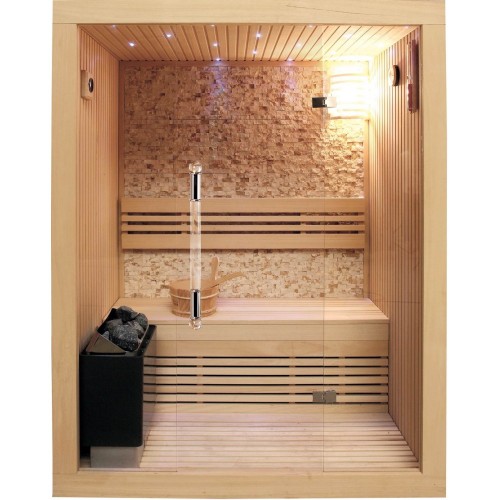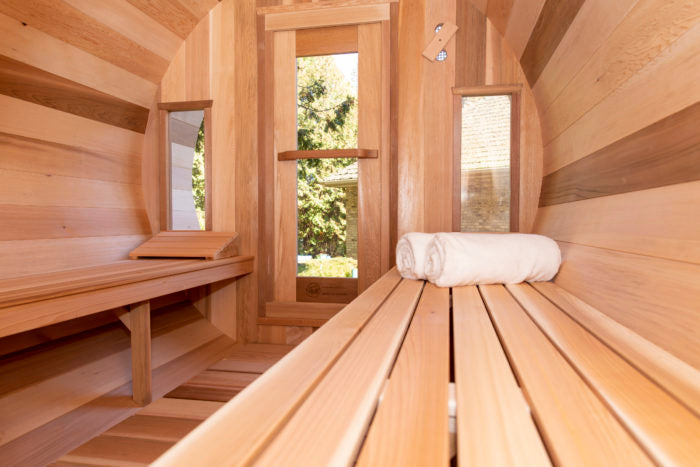Traditional Sauna for Beginners
Traditional Sauna for Beginners
Blog Article
The 9-Second Trick For Traditional Sauna
Table of ContentsGet This Report about Traditional SaunaThe Basic Principles Of Traditional Sauna Traditional Sauna for BeginnersFacts About Traditional Sauna Uncovered
The majority of the weight shed in a sauna is water loss and is re-gained upon rehydrating. Without an uncertainty sauna can be an essential part of a healthy and balanced weight loss program. To take a look at the differences in between typical and IR saunas, I will divide these into proven, academic, and made distinctions.Therefore, the hottest point in the saunawhich is at the ceiling straight over the sauna heateris usually between 185 and 190 F. Traditional Sauna. Claims that a typical sauna goes beyond 200 F is simply not real and not applicable for electrical saunas offered in the United States. The temperature for a far-infrared sauna is normally established in between 120 and 140 F; nevertheless, unlike the standard sauna, the objective in and IR area is not to achieve a heat
Since of this, the temperature distinction is virtually unimportant, because extreme sweating leads to both sauna types, yet the method of warming the body is different. In an IR sauna the bather will certainly feel hot and will sweat a lot, but at much reduced temperature levels. Therefore, if the objective is to spend longer time periods in the sauna, the IR sauna is a good selection.

What Does Traditional Sauna Mean?
When the high temperature level is accomplished, the elements cycle on and off to maintain the heat. Most traditional sauna users enjoy putting water over the rocks to produce steam to raise sauna humidity degrees. The benefits of putting water over the rocks include: making the area much more comfortable, moistening the nasal flows, and permitting the use of aromatherapy by blending vital oils with the water.
In a far-infrared sauna, the warm front pass through the body to efficiently heat the body and elevate the body core temperature. To accomplish this raised temperature level, Far-infrared emitters develop infrared power which is close to the same wavelength as that which the body normally emitsoften referred to as the "Crucial Variety" of 7 to 14 microns), so the power is well obtained by the body.
When the power gets in click over here now the body, it triggers the body temperature level to increase and eventually leads to perspiration. In an infrared sauna it is essential for the emitters/heaters to remain on practically regularly. Considering that there is no mass of rocks to maintain warmth, the sauna will certainly cool if the emitters turned off.
As pointed out over, the sauna bather in an infrared area wants to position himself in front of operating emitters to obtain maximum benefit from the heat. The heating time for the two rooms can be very different, depending on how the spaces are used. For a conventional sauna, a bather must allow 30-40 mins for the space to accomplish a wanted temperature level and to correctly pre-heat the rocks.
The Best Guide To Traditional Sauna
A well constructed sauna will normally accomplish a temperature of 150-160 F in regarding 30-40 minutes (Traditional Sauna). Click Here For hotter temperatures, the space might require to heat for a longer period. Once the area achieves established temperature, the heating unit will certainly cycle on and off, normally running concerning 50% of the time. The insulated wall surfaces and the heated rocks will maintain the area warm and at stable temperature levels.
To some, 15 minutes was "wasted" while the infrared power heated the timber panels instead than heating a body, while others discover a pre-heated area to be much more comfortable and think a raised beginning temperature level is required to start perspiring. The size of recommended use for every area is around the very same (10-15 mins per session); continue reading this nonetheless, as a result of the lower air temperatures and the capacity to feel the results of infrared heat quicker than a conventional sauna, it is not uncommon for a person to invest a total of 20-30 minutes in an infrared sauna.
Traditional saunas tend to be larger (therefore use even more power) than infrared saunas, although traditional saunas are definitely readily available in one and 2 person dimensions also. For a two-person typical sauna, 5x6 or 5x7 dimension is most preferred. The leading bench can comfortably seat two or 3 people and is likewise enough time to exist down during the sauna session.


The typical cost per kWH of electrical energy in the united state is approximately $0.11, so a 4.5 kW heating unit will cost about $.50 to run for one hour, if the heater runs continually for one hour. Typically a sauna heater will certainly compete 75% of the very first hour and 50% of subsequent hours on since the components cycle once the set temperature is achieved.
Traditional Sauna Fundamentals Explained
A two individual far-infrared room is typically physically smaller than a traditional sauna, frequently regarding 4' x 4' or smaller. The IR home heating system is typically 1.5-1.7 kW making use of a 120 volt 15 amp plug-in service. Given that the room can be utilized sooner than a sauna space, we will assume the space is made use of for to of an hour consisting of warm up time.
Finally, there is a hardly ever talked about distinction in the social experience between the two areas. While our society has actually lost some of the social advantage of the standard sauna experience, it can be extremely socially gratifying. From household time in the sauna, to heart-felt conversations with loved ones, to sauna partiesthe typical sauna experience can lead to intimate mingling.
The majority of higher end infrared spaces include colored light therapy, sound systems and full-glass fronts.
Report this page